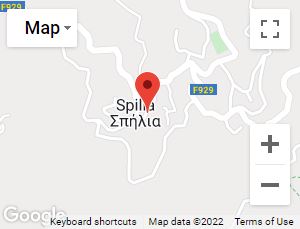Panagia Chrysokourdaliotissa
More: Churches
Τhe “Kougki” of ΕΟΚΑ
It is located at the village of Kourdali and it is the house where on June 20th 1958, a very powerful explosion killed four brave men of EOKA. These were Panayiotis Georgiades, Alecos Constantinou, Costas Anaxagora and Andreas Patsalides. The house was semi-demolished. Consequently, it became the “Kougki” of the EOKA fight. The ground floor of the residence, where the sacrifice of the four heroes occurred, has been transformed into a museum.
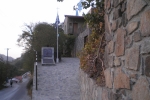
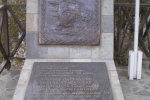
Agios Antonios of Spilia (old church)” of ΕΟΚΑ
More: Churches
Τhe Pine-Belfry
It is a huge, branchy, symmetrical pine in front of the western entrance of the ancient church of Agios Antonios of Spilia. At some point, the trunk is split into two thick armpits. In between them, a belfry was made. Its sweetly sounded bell would call the loyal Christians to the church, the children to school and would announce every joy and sadness of the community.
On the pine base, a very large rectangular stone is stuck in it. Legend has it that a resident of Spilia once tried to cut the pine but he did not succeed. At night, Agios Antonios placed a huge stone to cover the wound.
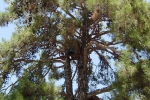
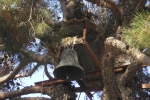
Agios Antonios of Spilia (new church)
More: Churches
Eirini Andrea Chrysanthou Community Park
It is a greenery area which combines a place for rest, a playground and an amphitheatre. It is located on the central hill of the community, next to the church of Agios Antonios. The park was created in the memory of Eirini Andrea Chrysanthou.
The creation of the Park began with the savings of Eirini. The space was offered by the Association of Expatriates and Friends of Spilia-Kourdali. The President of the Community of Spilia at the time, Andreas Kakoullis, included the project in the beautifying works of the community, thus making the Government’s contribution possible. The project began in 1994 and was completed in 2002 by a crew of the Lefkosia District Administration.
In 2006, the Association of Expatriates placed a plaque at the theatre site in honour of the three teachers of the community Clearchos Kyriakides, Eftechia Kasinou and Andreas Valiantis.
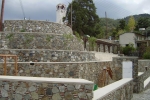
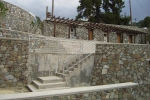
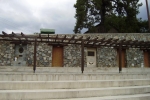
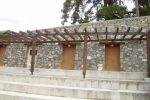
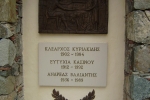
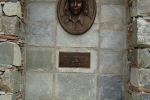
Olive Mill of Paphitaena
More: Ancient Monuments
ΕΟΚΑ Fighter’s Monument
It is located in the centre of Spilia. It is a complex of the four statues of the E.O.K.A fighters, who were killed at Kourdali on the 20th of June 1958, while they were being trained on the use of a mine. The monument was built at a site bought by the Association of Expatriates of the community. A committee worked for the construction of the monument in which took part the local land authorities, the associations and the heroes’ families.
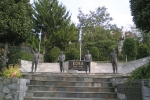
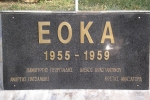
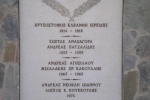
Popular Art Museum
The “Popular Art Museum” is located at the entrance of the core of Spilia, on the main road of the community. It was established in 2005 by the association “PROODOS”. Displayed in the museum are almost all the furniture and utensils of a traditional house. Also displayed, is some of the equipment used in traditional professions or occupations.
More: Museums
“Krya Vrysi”
It is the old fountain (Vrysi) of Spilia. More specifically, it is a water tank which was built in 1908 and which receives the water of two nearby springs. The water ends up in the tank through stone made grooves. From the tank, the water flows through two taps which are placed on a different height. The water is very cold and it has a very pleasant taste. Approximately until 1960, it was the basic source of water for the village. Young girls and men would gather here in the afternoons to fill their “kouzes” (pots) with water but also to chat and joke.
In about 1980, the water was polluted by nearby houses and it was unsuitable to drink. However, Krya Vrysi continued to magically attract the people of Spilia, not only for its water but mainly for its history and its surrounding magical scenery. For this reason, the Association of Expatriates, in cooperation with the Lefkosia District Administration, proceeded in 1987 in beautifying the surrounding area, which acquired, with the stone used to adorn the area, additional beauty.
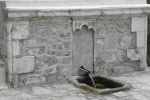
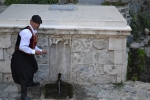
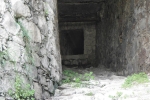
The tomb of Panoukla (Plaque)
The “Tomb of Panoukla” is situated at the location “Laou”, on a slope east of Spilia. It consists of two boulders with one being on top of the other. The view of these two rocks causes awe and makes people wonder how the one holds upon the other.
According to tradition, there was once a plague epidemic at Spilia. The residents of Spilia would get sick and die one after another. During an afternoon, they all resorted to the neighbouring community of Kourdali, to the old church of Virgin Mary. They prayed, and performed a litany of her icon followed by a vigil. After the invocation, the Virgin Mary climbed from Kourdali to Spilia, found the Panoukla and hunted her down. It climbed a rock to save herself but she was wrong. Virgin Mary grabbed the nearby rock with superhuman strength and crushed Panoukla with it, this way curing all the sick persons. Since then, the two rocks remained one upon the other and consequently became the “Tomb of Panoukla”.
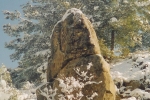
The ΕΟΚΑ Hideouts
The EOKA Hideouts were a system which consisted of three lairs, storage rooms, a cooking room, observatories and others which were situated on the ridge which overhangs the village of Kourdali. They were built in the summer of 1955. The Hideouts hosted the chief of EOKA, general Georgios Grivas- Dighenis and 18 other guerrilla fighters from the 23/11/55 until the 11/12/1955. The famous “Battle of Spilia” took place here, during which the British lost many soldiers. This was due to the military genius and bravery of Gregoris Auxentiou.
More: EOKA Hideouts
The Shoemaker Museum
It is located in the centre of Spilia. Displayed in the museum are the tools of the shoemaker’s craft and the machines of Christos Chrysanthou who was well known for his skills in the surrounding villages. The forming patterns called ‘moles’, the shoe trees and the note books with the credit complete the shoemaker’s store. Also presented in the museum is Christos, the best dancer of the area, the famous hunter and great farmer who lived throughout the entire 20th century.
More: Museums
Listed Residence of Andrea Chrysanthou
It is built in the centre of Spilia and in its semi-underground floor it accommodates the Shoemaker’s Museum. It is the first listed residence of the community and it was inaugurated by the Minister of Interior on the 20th October 2007. The residence was primarily built in 1870 by Nicolas Kapournais and the Department of Town Planning decided that it was a fine sample of popular architecture, thus being declared as a listed residence by the Council of Ministers.
The architectural plans were prepared by Chrysanthos Pissarides and the restoration was made by the builder Vasilis Loizou. Everything was done under the examining sight and the active participation of the present owner Andreas Chrysanthou. What is of particular interest is the closet of the owner’s mother named Antigoni, which was made in 1929 by the popular craftsman of Spilia Christos Ierides. The entire residence, along with its furnishing, is a museum of the popular residence of the beginning of the twentieth century.
Listed Residence of Theophilou Fylakrides
It is located in Kourdali. It is a beautiful two-storey house of the 19th century, built with local stone. Internally, it is magnificent. A traditional post supports the upper floor and a traditional fireplace and stove called “tsiminia” is lit up in a corner. The walls are made of stone which was not covered with plaster, this way creating a unique environment. Mrs. Aphrodite has decorated the house with special taste and with an absolute respect towards tradition.

